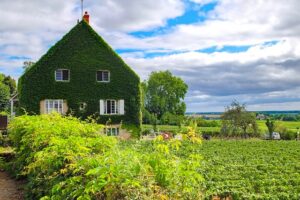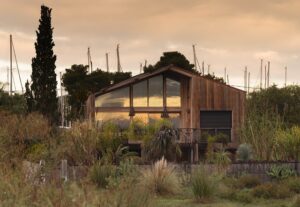Introduction
When it comes to enjoying a cozy fire in your backyard, knowing how to stack wood in a fire pit is essential. Properly stacking the wood not only ensures a long-lasting fire but also promotes efficient burning and minimizes smoke. In this article, we will dive into the details of stacking wood in a fire pit, covering the materials used, different stacking methods, and tips for a successful fire.
Materials Used
Wood: The type of wood you choose for your fire pit can significantly impact the quality of your fire. Hardwoods such as oak, maple, or hickory are ideal as they burn longer and produce more heat. Softwoods like pine or cedar can be used, but they burn faster and may create more smoke.
Kindling: Kindling is small, dry sticks or twigs used to start the fire. It helps ignite the larger pieces of wood. Collect dry twigs or use newspaper, cardboard, or fire starters to create a base for your fire.
Stacking Methods
There are several stacking methods you can use to arrange the wood in your fire pit. Each method has its advantages, so choose the one that suits your needs.
Teepee Method: This method involves arranging the wood in a cone or teepee shape. Start by placing a few pieces of kindling in the center of the fire pit, forming a small pyramid. Lean larger pieces of wood against the kindling, gradually increasing their size as you move outward. Leave space between the logs to allow airflow.
Log Cabin Method: The log cabin method creates a stable structure that allows for good airflow. Begin by placing two larger logs parallel to each other, leaving a gap between them. Add two more logs perpendicular to the first two, creating a square or rectangular shape. Continue alternating the direction of the logs, stacking them on top of each other until you reach the desired height.
Platform Method: The platform method involves creating a solid base for your fire. Start by placing two larger logs parallel to each other. Add two more logs perpendicular to the first two, forming a square or rectangular shape. Continue adding layers of logs, alternating their direction until you have a sturdy platform. Place kindling on top of the platform and build your fire on it.
Tips for a Successful Fire
To ensure a successful fire, consider the following tips:
Dry Wood: Use dry wood for your fire. Wet or green wood can be difficult to ignite and may produce excessive smoke.
Proper Airflow: Leave enough space between the logs to allow for proper airflow. This helps the fire burn more efficiently and reduces smoke.
Start with Kindling: Always start your fire with kindling. It helps ignite the larger pieces of wood and ensures a steady flame.
Gradual Addition of Wood: Add wood gradually as the fire burns. Avoid overcrowding the fire pit, as it can smother the flames.
Keep a Safe Distance: Maintain a safe distance between the fire and any flammable objects, including trees, buildings, or furniture.
Conclusion
Properly stacking wood in a fire pit is crucial for a long-lasting and efficient fire. By using the right materials, such as hardwoods and kindling, and employing different stacking methods like the teepee, log cabin, or platform method, you can create a beautiful fire that provides warmth and ambiance. Remember to follow safety precautions and enjoy your fire responsibly.
References
– www.firepitandgrillingguru.com
– www.popularmechanics.com
– www.hgtv.com










